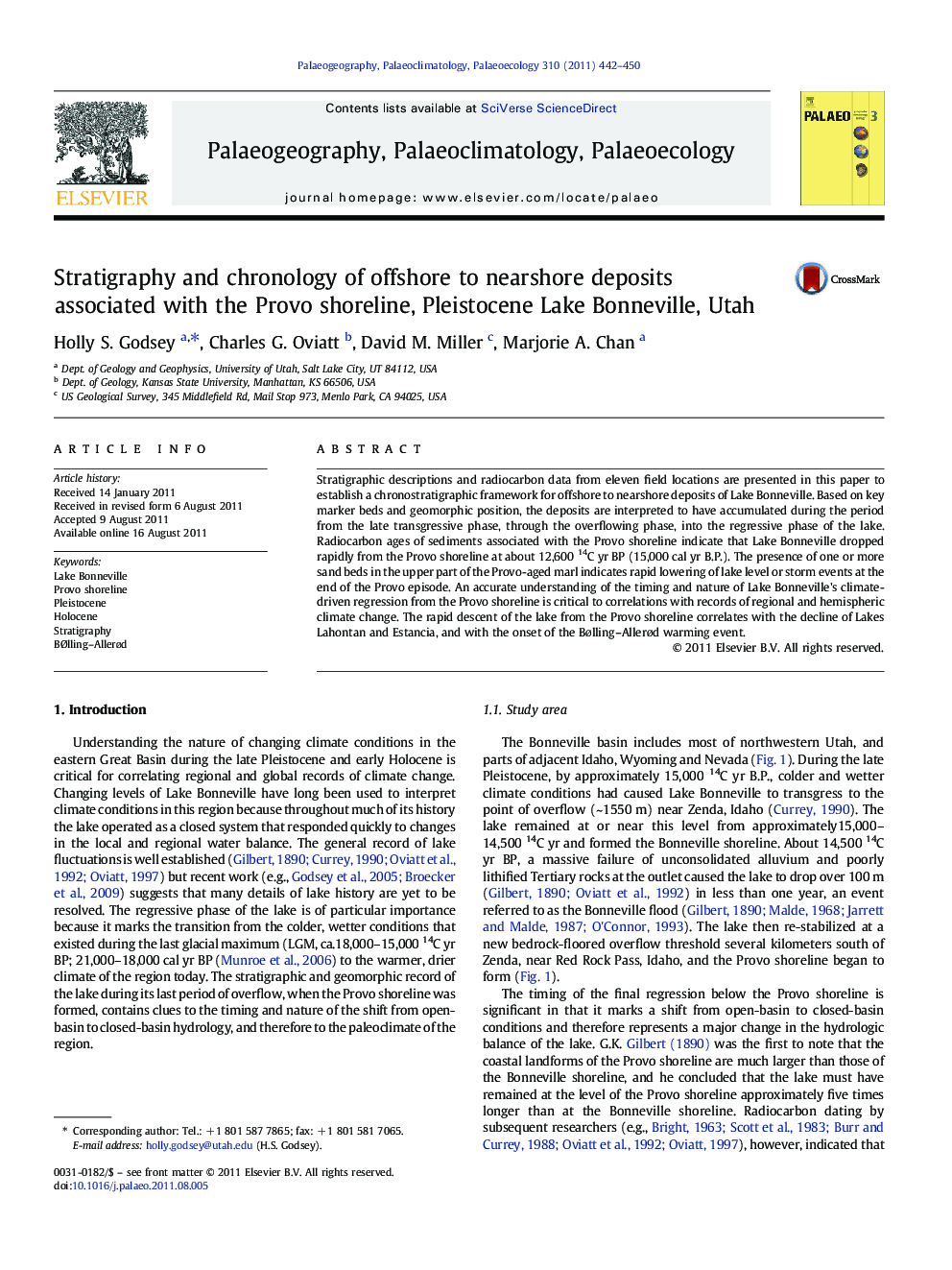| کد مقاله | کد نشریه | سال انتشار | مقاله انگلیسی | نسخه تمام متن |
|---|---|---|---|---|
| 4467115 | 1622247 | 2011 | 9 صفحه PDF | دانلود رایگان |

Stratigraphic descriptions and radiocarbon data from eleven field locations are presented in this paper to establish a chronostratigraphic framework for offshore to nearshore deposits of Lake Bonneville. Based on key marker beds and geomorphic position, the deposits are interpreted to have accumulated during the period from the late transgressive phase, through the overflowing phase, into the regressive phase of the lake. Radiocarbon ages of sediments associated with the Provo shoreline indicate that Lake Bonneville dropped rapidly from the Provo shoreline at about 12,600 14C yr BP (15,000 cal yr B.P.). The presence of one or more sand beds in the upper part of the Provo-aged marl indicates rapid lowering of lake level or storm events at the end of the Provo episode. An accurate understanding of the timing and nature of Lake Bonneville's climate-driven regression from the Provo shoreline is critical to correlations with records of regional and hemispheric climate change. The rapid descent of the lake from the Provo shoreline correlates with the decline of Lakes Lahontan and Estancia, and with the onset of the BØlling–AllerØd warming event.
► Analysis and radiocarbon data from stratigraphic sections refine lake-level history.
► Lake level dropped abruptly at the beginning of the regressive phase.
► Provo shoreline formation ceased approximately 12,600 14C yr BP.
► The regression corresponds with onset of the global BØlling-AllerØd warming event.
Journal: Palaeogeography, Palaeoclimatology, Palaeoecology - Volume 310, Issues 3–4, 1 October 2011, Pages 442–450